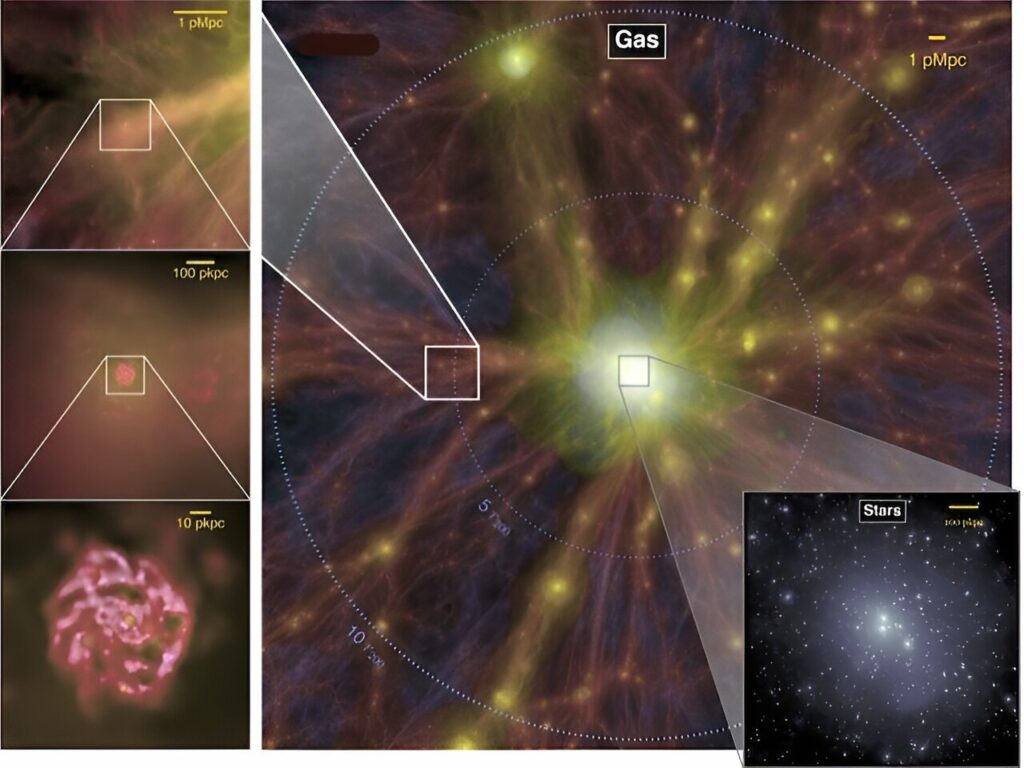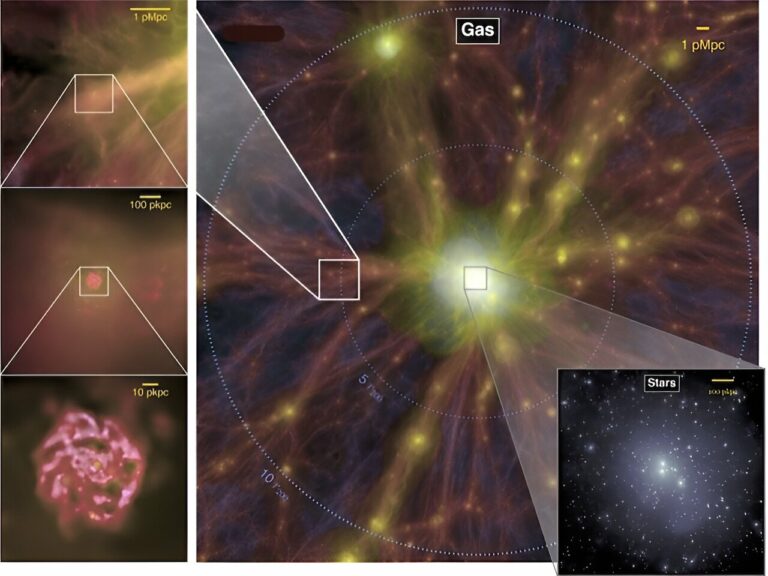Investigating the Impact of ‘Cosmic Web’ Regions on Galaxy Behavior say Researchers
The University of Kansas (KU) researchers aim to gain a deeper understanding of the intricate mechanisms involved in the evolution of galaxies. These galaxies traverse through a “cosmic web” of diverse environments throughout their lifetimes.
Professor Gregory Rudnick, who specializes in physics and astronomy at KU, is leading a team dedicated to studying the “gas content and star-formation properties of galaxies.” These properties are influenced by the specific locations within the cosmos that the galaxies are moving through.
The main objective of this project is to comprehend how environmental factors impact the transformation of galaxies. In the vast expanse of the universe, galaxies are distributed unevenly, characterized by varying densities. They form large clusters, consisting of hundreds to thousands of galaxies, as well as smaller groups with tens to hundreds of galaxies.
Furthermore, galaxies can either be part of elongated filamentary structures or exist in isolated states within regions of lower density in the universe.
Previous research has primarily focused on comparing galaxies in clusters and groups to those in the least dense regions of the universe, known as “the field.” However, these studies have overlooked the filamentary highways that connect the densest regions. Rudnick’s team will consider the full range of densities in the universe by examining how galaxies respond to the environment within these filaments. These filaments guide galaxies towards galactic groups and clusters, thereby influencing the evolution of galaxies along their journey.
Galaxies follow a path into these filaments, encountering a dense environment for the first time before progressing into groups and clusters. By studying galaxies within filaments, we can investigate the initial interactions between galaxies and dense environments. The majority of galaxies that enter the “urban centers” of clusters do so along these “superhighways,” while only a small number take alternative routes that bring them into clusters and groups with minimal interaction with their surroundings.

The study will primarily focus on examining the impact of filaments, fields, groups, and clusters of galaxies on the “baryon cycle” of gases within and around galaxies. Each of these cosmic environments influences the behavior of gas in and around galaxies, including the dense molecular gas that serves as the building blocks for star formation. Disruptions to this baryon cycle can either enhance or impede the production of new stars.
The importance of understanding the baryon cycle has been recognized by the astronomical community, as evidenced by the recent Astro2020 Decadal survey. This federal report outlines the research goals for the 2020s and identifies the baryon cycle as a key science topic for the upcoming decade.
Rudnick stated that the vast expanse between galaxies is filled with gas. In fact, the majority of atoms in the universe exist in this gas, which has the ability to accumulate onto galaxies. This intergalactic gas undergoes a transformation into stars, although the efficiency of this process is relatively low, with only a small percentage contributing to the formation of stars. The majority of the gas is expelled in the form of large winds. Some of these winds exit into space, known as outflows, while others are recycled and return.
This continuous cycle of accumulation, recycling, and outflows is referred to as the baryon cycle. Galaxies can be seen as engines that process baryons, drawing gas from the space between galaxies and converting a portion of it into stars. Stars, in turn, go through supernova events, producing heavier elements. Some of the gas is blown out into space, creating a galactic fountain that eventually falls back to the galaxy.
However, Rudnick explained that when galaxies encounter a dense environment, they can experience pressure due to their movement through the surrounding gas. This pressure can disrupt the baryon cycle by actively removing gas from the galaxy or depriving the galaxy of its future gas supply. In the centers of clusters, galaxies may have their ability to form stars diminished as their gas supply is taken away.
“The disruption affects how galaxies take in and expel gas, leading to changes in their star formation processes,” he stated. “While there may be a temporary increase in star formation, in almost all cases, it eventually results in a decline in star formation.”
Rudnick’s colleagues at KU will consist of graduate students such as Kim Conger, who played a significant role in shaping the grant proposal, as well as undergraduate researchers. Rose Finn, the co-primary investigator and a professor of physics and astronomy at Siena College, will also be responsible for employing and training students.
The team of researchers will utilize astronomical datasets from sources like DESI Legacy Survey, WISE, and GALEX imaging, which encompass approximately 14,000 galaxies. Furthermore, additional observations will be conducted by staff members at both campuses using Siena’s 0.7-m Planewave telescope. This telescope will be equipped with a custom filter, which will be acquired through the grant. KU students will have the opportunity to remotely observe using the Siena telescope, as they have already done so in the past during a collaborative Observational Astronomy course in 2021 and 2023.
Community outreach
As part of a long-standing initiative by Rudnick, the project will involve high school students from Kansas and New Jersey. The aim is to introduce university-level astronomy coursework into secondary schools. With the help of a new grant, a high school astronomy class will be established in collaboration with Siena College. Additionally, the existing astronomy course at Lawrence High School, located near KU’s Lawrence campus, will be expanded. Rudnick’s efforts in developing this class were recognized by KU, earning him the prestigious Community Engaged Scholarship Award in 2020.
This article is republished from PhysORG under a Creative Commons license. Read the original article.
Do not forget to share your opinion with us to provide you with the best posts !




0 Comments